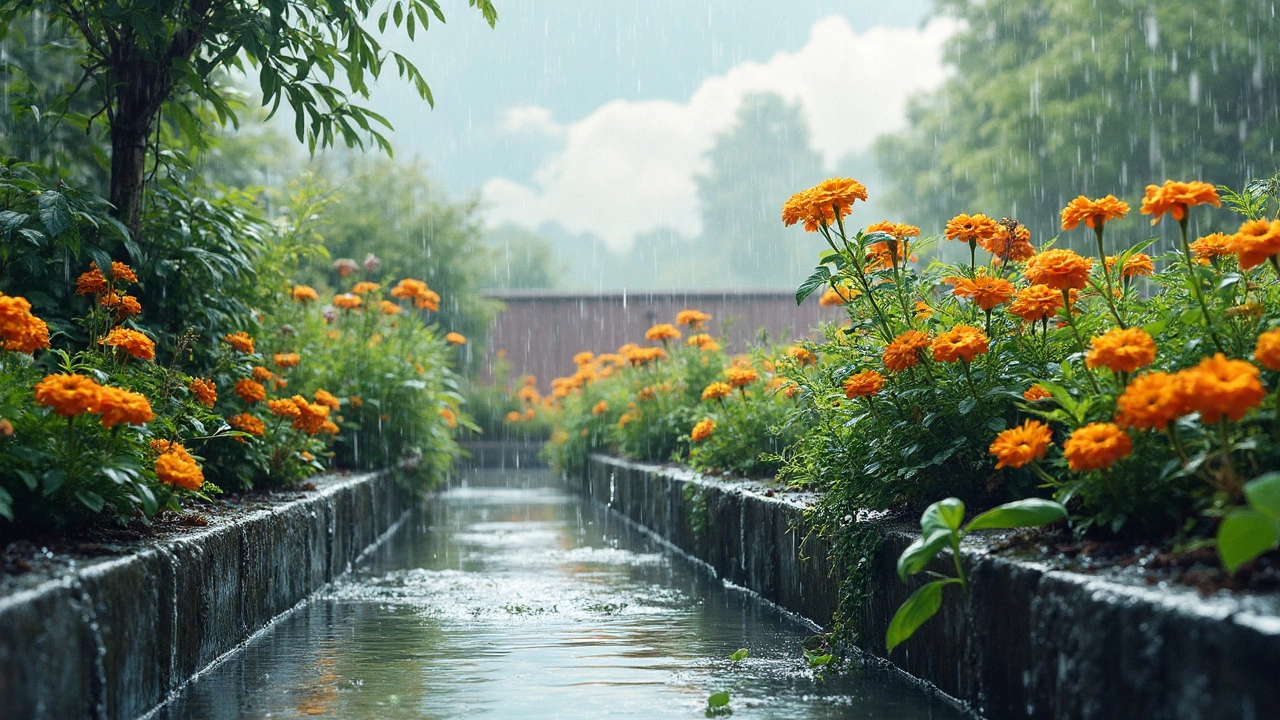Understanding the right slope for your terrace slab is crucial for effective water drainage and maintaining a healthy garden. Without the proper slope, water can pool on your terrace, leading to structural damage and problems for your plants. This article explores the ideal slope, why it's important, and how you can achieve it for a thriving rooftop garden. By implementing these tips, you'll ensure that your garden can flourish without the hassle of excess water.
Water Drainage in Gardening: Why It Matters and How to Fix It
When your plants droop even after you water them, it’s not too little water—it’s too much water drainage, the process by which excess water moves through soil away from plant roots. Also known as soil percolation, it’s the quiet hero or villain in every garden. If water sits around roots longer than 24 hours, roots suffocate, rot sets in, and your plants die—not from drought, but from drowning. This isn’t just a balcony problem. In India’s heavy clay soils and monsoon-prone regions, water drainage is the difference between a thriving garden and a muddy mess.
Good water drainage doesn’t mean water vanishes instantly. It means water flows out just fast enough to let roots breathe. Poor drainage shows up in yellow leaves, stunted growth, or mold on the soil surface. You might think you’re helping by watering more, but you’re just making it worse. Fixing it starts with understanding what’s holding water back: compacted soil, wrong pots, or blocked drainage holes. Soil amendments like perlite, compost, or leaf mold aren’t fancy additives—they’re your first line of defense. They break up heavy soil like a crowbar, letting water slip through. And if you’re using drip systems, drip irrigation problems like clogged emitters or uneven flow can mimic drainage issues. A slow drip that pools in one spot is just as bad as no drainage at all.
Even indoor plant lovers aren’t safe. Overwatered houseplant recovery isn’t about cutting back on water—it’s about fixing the container’s ability to drain. A pot without holes? It’s a water trap. A saucer that never empties? It’s a root rot factory. You can’t save a plant with rotten roots unless you fix the drainage first. The same logic applies to terrace gardens, balcony planters, and backyard beds. Whether you’re growing basil on a windowsill or tomatoes on a rooftop, water drainage is the invisible foundation. The posts below show you exactly how to diagnose it, fix it, and prevent it—from simple soil mixes to real fixes for clogged drip lines and soggy balcony floors. No guesswork. No fluff. Just what works in Indian conditions.
